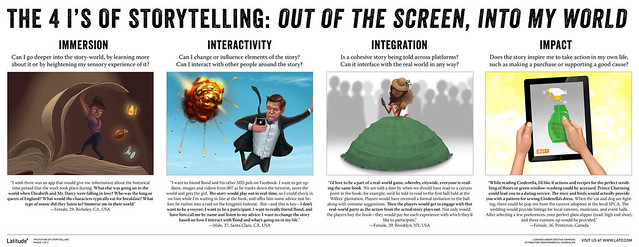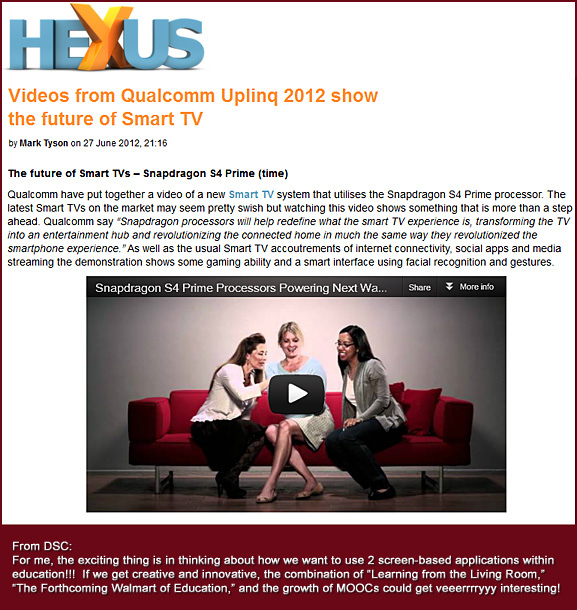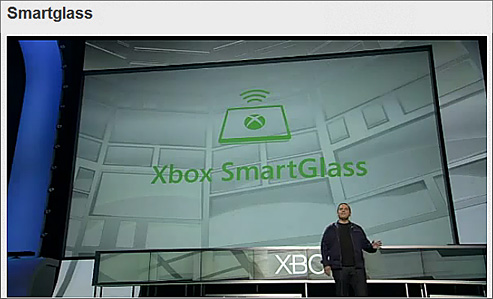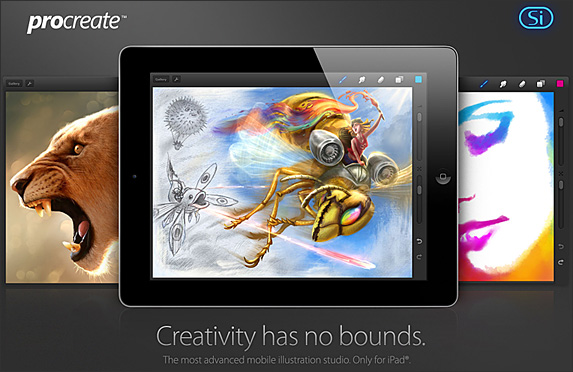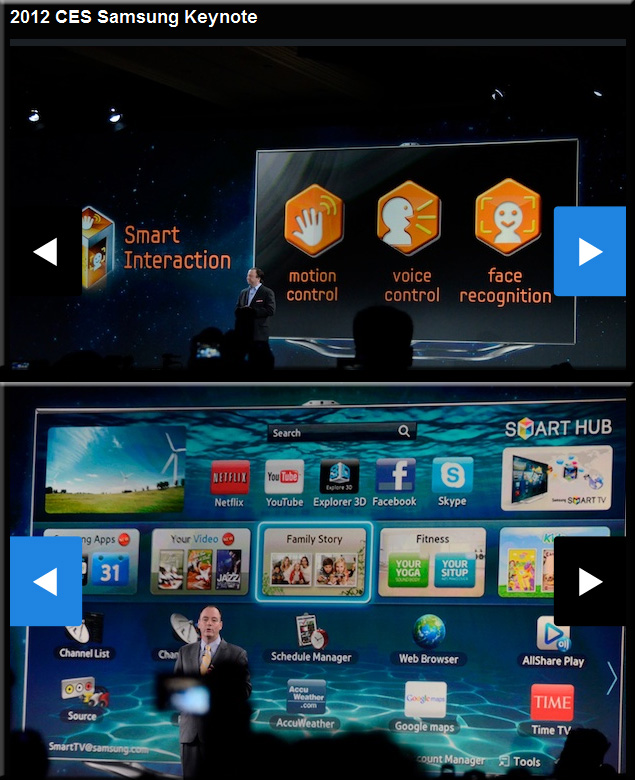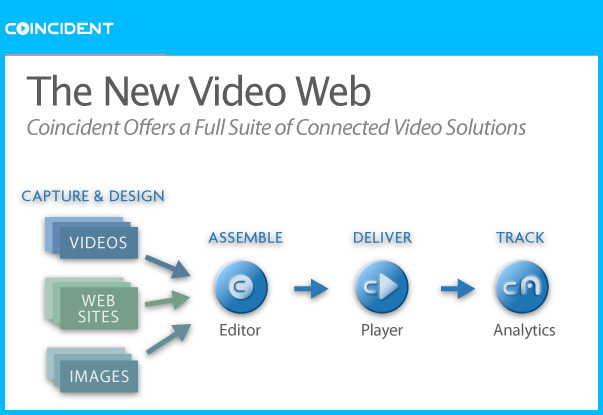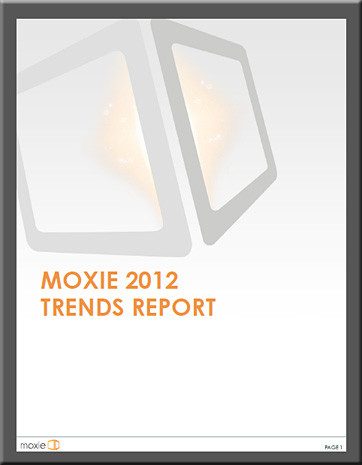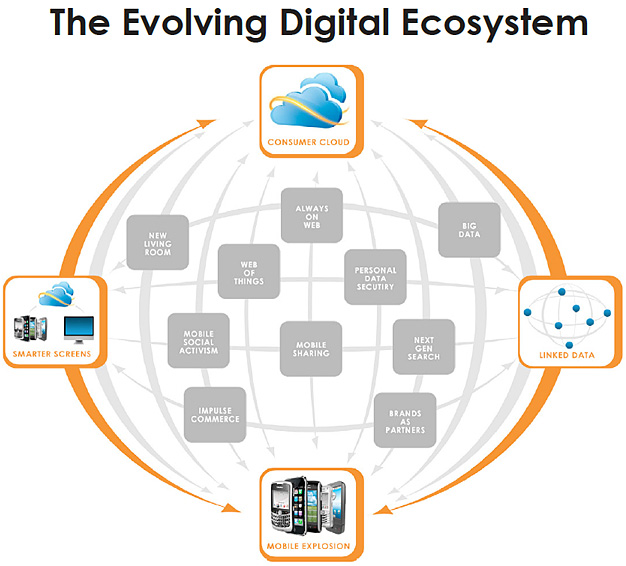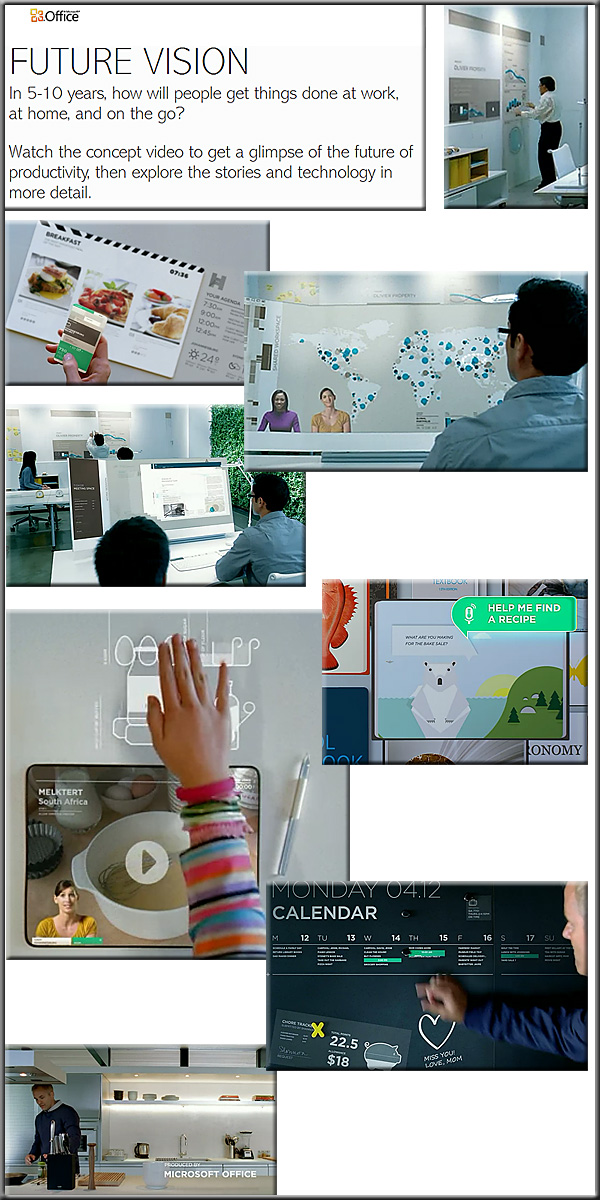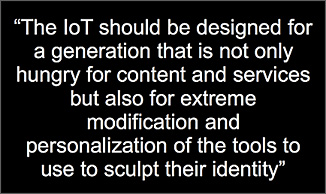From DSC:
As the massive convergence of the computer, the telephone, and the television continues, other trends are also taking place that may eventually impact how we interact with educationally-related content. That is, the main screen of our living rooms might be delivering a 5-10 minute “lecture”, but our tablets and smart phones may be in our laps as we interact around this content with others.
Along these lines, as transmedia storytelling develops, the use of multiple devices and methods to consume and contribute to content may be setting the stages for how things can get done with more educationally-related applications.
Consider this excerpt from Complex TV: Transmedia Storytelling — by Jason Mittell, Associate Professor of American Studies and Film & Media Culture at Middlebury College:
As television series have become more complex in their narrative strategies, television itself has expanded its scope across a number of screens and platforms, complicating notions of medium-specificity at the very same time that television seems to have a clearer sense of distinct narrative form. This chapter explores how television narratives are expanded and complicated through transmedia extensions, including video games, novelizations, websites, online video, and alternate reality games. With specific analyses of transmedia strategies for Lost and Breaking Bad, I consider how television’s transmedia storytelling is grappling with issues of canonicity and audience segmentation, how transmedia reframes viewer expectations for the core television serial, and what transmedia possibilities might look like going forward.
Also relevant/see:
- Please don’t ruin the second screen — from techcrunch.com by Somrat Niyogi
Excerpt:
The second screen space is going to be a multi-billion dollar market. Just last week, Tim Cook announced that 67M iPads were sold in less than two years. It took more than 24 years to sell that many Macs. With the growing trend of second screen activity (i.e. using tablets while you watch TV), there is bound to be major disruption in the TV industry.
- Comcast connects Skype HD videoconferencing to the living room TV — from networkworld.com by Larry Hettick
Excerpt:
With the Skype on Xfinity service customers will also be able to:
• Make and receive Skype-to-Skype video and audio calls or send instant messages via Skype on a TV while watching their favorite TV show at the same time, and accept incoming Skype calls during a TV show with the help of Caller ID.
• Import Skype friends into a global address book which can also contain Facebook, Outlook, Gmail and smartphone contacts so subscribers can find friends who already use Skype and see when contacts are online and available to talk.
• Communicate with the hundreds of millions of connected Skype users around the globe, whether on a Skype-enabled TV, PC or mobile device.
- A TV platform so disruptive everyone’s suing it — from fastcompany.com by David Zax
Excerpt:
We chat with Chet Kanojia of Aereo, the new TV-where-and-when-you-want-it service that has a few legal troubles. Could Aereo finally disrupt the loathed cable bundle–and TV altogether?
- Now serving the latest in exponential growth: YouTube!— from singularityhub.com by David J. Hill.
.

Addendum on 6/2/12









